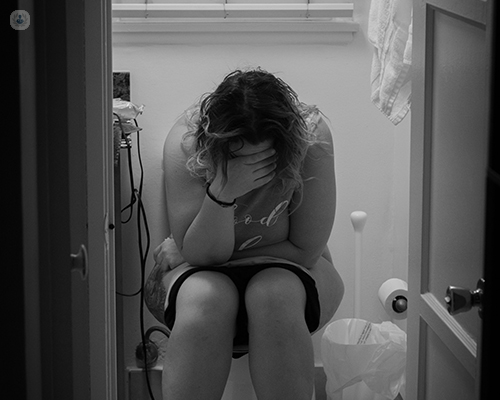UTIs: your questions answered: part 2
Written in association with:In the second of a two-part series, leading consultant Mr Joyti Basu answers more of your questions about UTIs, including causes and treatments.
What is the main cause of UTIs?
When regarding women and ureteric infections, there are various issues and risk factors which can lead a woman to have urinary tract infections. Firstly, some women are more prone to UTIS.
Past research has demonstrated that bugs stick to the wall bladder and tests have been done with the same bugs, and they found that the bugs stick to mucosa of the inner cheek. Some people have got the inherent ability for the bugs to go and stick to mucosa surfaces.

For women, certain things like intercourse can cause them to have more infections, particularly those who are more prone to it, because as I mentioned to you in part 1, the urethra (water pipe) is only 2.5 centimetres. As a result, the bugs have got easy access into the bladder, particularly during times of intercourse.
Other factors which may contribute to UTIs include certain practices such as having bubble baths and vaginal douches.
In terms of complex UTIs, if you have an undiagnosed condition, you may present with a UTI. This may happen if somebody's not emptying their bladder, for whatever reason. This means that they're keeping behind a residual in the bladder, which leads to an infection.
Certain health conditions can make you more prone to infections, particularly diabetes. This is because people with diabetes have a natural immunity gets and high levels of sugar in the urine, which bugs tend to thrive in.
Again, as mentioned in part 1, if you have a stone in the kidney or in the bladder, that could act as a source of infection. In some cases, even a cancer can manifest itself as an infection. For example, someone wo has a tumour in the bladder can get recurrent water infections.
The reason is that the tumour in the bladder can decay and some of it dies off, it gets infected, and people can present with urinary tract infections. Furthermore, if people have long-term catheters, they can develop urinary tract infections. As you know, a catheter is a piece of plastic in your body and it has easy access from outside so the bugs can go in and out freely.
Elderly people who are institutionalised often use a lot of continence devices like pads, which are wet most of the times, which be a source of infection and cause problems.
Causes of UTIs are varied but I would say that in women, the most common predisposing factors are diabetes, sexual intercourse, personal hygiene habits, if they have got underlying medical conditions and particularly if they are not emptying the bladder.
How do you know if you have a UTI?
The hallmark of a UTI is clinical science. We know that the patient has complaints of a UTI when they come in saying “ I'm really having urgency. I'm burning stinging. I'm sometimes I'm feeling feverish”.
This is when our attention is drawn to the fact that the patient has a problem with the waterworks, most likely an infection. We then test the urine with a dipstick because there are certain features in the lab sticks which will indicate that the patient most likely has an infection. After this, the urine is sent to a laboratory and the culture comes back which proves positive that the patient has got a bug growing in the urine
More and more people are developing multi-drug-resistant bacteria. It's very important to see that and culture the urine, because if we do not grow any bugs and yet the patient has symptoms, then we have to think twice about the diagnosis of a urinary tract infection. There are other reasons why people can present with similar symptoms and it's not a UTI.
How are they treated can they go away by themselves?
The classical medical teaching is that if you have a urinary tract infection, if you have symptoms, if you have a culturally proven diagnosis, then you should treat them. Normally what happens is that if somebody presents with a urinary tract infection and they have a positive dipstick, the culture is sent off and they are given empiric antibiotics. The most common antibiotics which we use are trimethoprim or nitrofurantoin.
As previously mentioned, the most common bug is E. coli and both these antibiotics are sensitive. They can kill the bacteria and once the culture results come back, we can tailor the antibiotic regimen according to it However, frequently a three or five-day course is enough to get rid of the antibiotic, of the ureter tract infections.
There are various ways of treating different types of UTIs, as I mentioned to you it all depends upon what is growing. If a bug comes back (which is very odd/rare), then we have to look for causes as to why the patient is having this particular bug and if the patient has had this particular bug then we have to look for other causes.
We have to do an ultrasound scan of the bladder and the kidneys to find out if the patient has got a stone, if the patient is not emptying the bladder or if there is any other cause behind it. However, for a simple UTI, a three to five-day course of trimethoprim or nitrofurantoin, is enough.
If you are suffering from a UTI and would like to book a consultation with Mr Basu, simply visit his Top Doctors profile today.



